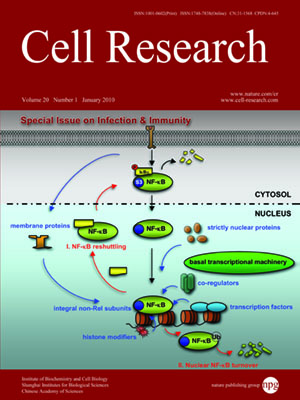
Volume 20, No 1, Jan 2010
ISSN: 1001-0602
EISSN: 1748-7838 2018
impact factor 17.848*
(Clarivate Analytics, 2019)
Volume 20 Issue 1, January 2010: 51-61
REVIEWS
H5N1 influenza viruses: outbreaks and biological properties
Gabriele Neumann1, Hualan Chen2, George F Gao3, Yuelong Shu4 and Yoshihiro Kawaoka1,5
1Department of Pathological Sciences, School of Veterinary Medicine, University of Wisconsin-Madison, WI 53711, USA
2National Key Laboratory of Veterinary Biotechnology, Harbin Veterinary Research Institute of Chinese Academy of Agricultural Sciences, Harbin 150001, China
3Institute of Microbiology, Chinese Academy of Sciences, Beijing 100101, China
4State Key Laboratory for Disease Prevention and Control, National Institute for Viral Disease Control and Prevention, Chinese Center for Disease Control and Prevention, Beijing 100050, China
5Institute of Medical Sciences, University of Tokyo, Tokyo 108-8639, Japan
Correspondence: Yoshihiro Kawaoka,(kawaokay@svm.vetmed.wisc.edu )
All known subtypes of influenza A viruses are maintained in wild waterfowl, the natural reservoir of these viruses. Influenza A viruses are isolated from a variety of animal species with varying morbidity and mortality rates. More importantly, influenza A viruses cause respiratory disease in humans with potentially fatal outcome. Local or global outbreaks in humans are typically characterized by excess hospitalizations and deaths. In 1997, highly pathogenic avian influenza viruses of the H5N1 subtype emerged in Hong Kong that transmitted to humans, resulting in the first documented cases of human death by avian influenza virus infection. A new outbreak started in July 2003 in poultry in Vietnam, Indonesia, and Thailand, and highly pathogenic avian H5N1 influenza viruses have since spread throughout Asia and into Europe and Africa. These viruses continue to infect humans with a high mortality rate and cause worldwide concern of a looming pandemic. Moreover, H5N1 virus outbreaks have had devastating effects on the poultry industries throughout Asia. Since H5N1 virus outbreaks appear to originate from Southern China, we here examine H5N1 influenza viruses in China, with an emphasis on their biological properties.
Cell Research (2010) 20:51-61. doi: 10.1038/cr.2009.124; published online 3 November 2009
FULL TEXT | PDF
Browse 2226


